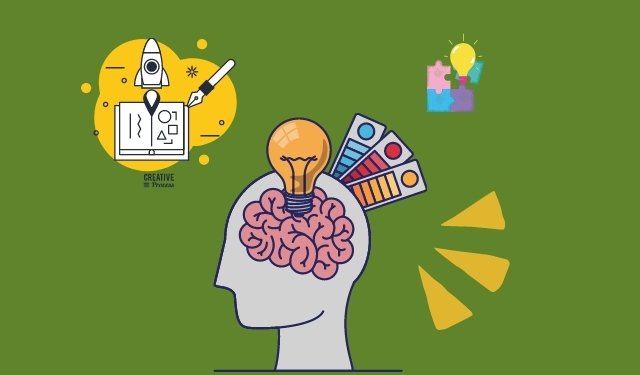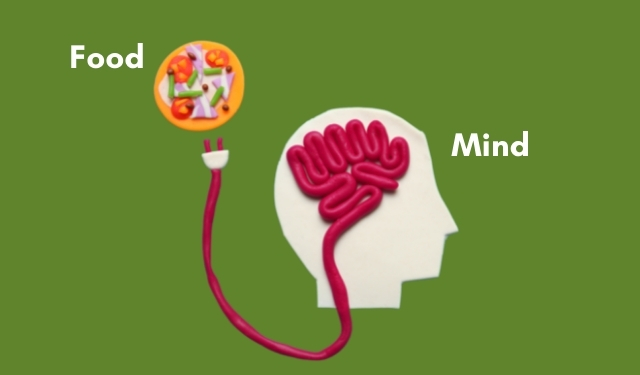A Technique For Producing Ideas is an advertising classic by James Webb Young that shares a simple yet profound technique to produce amazing ideas and change the world.
Who should read this book summary and why?
Anyone who wants to produce great ideas or unleash his creative genius should read this book.
If you are not into creative work, you should still read this as it will help you understand how our mind produces ideas.
You will learn the role of our subconscious mind and understand its amazing abilities.
A Technique For Producing Ideas Summary
In this book summary, I’ll share the practical lessons I learned from this book.
You are going to learn a lot of things about producing great ideas.
Excited? Okay.
Let’s dive right in!
Lesson #1: Creative people reconstruct the world

The author talks about types of people:
- The people who think creatively.
- The people who follow routines.
Let me explain.
We all do both of such things in our day-to-day life.
Sometimes, we become so creative that we start imagining things.
While, the other times, we become so mechanical that we just do what other people are doing without putting any thought into it.
But who reconstructs this world: The creative ones or the mechanical ones?
Yes, it’s the creative one.
To build something new, you need creativity.
Mechanical thinking only helps the world scale.
True innovation is only achieved through new innovative ideas.
Producing unique ideas is creativity.
But where do these creative ideas come from?
Do you need to be talented to be creative?
Or are we all creative if we pay attention?
Don’t worry.
We will be discussing such questions throughout this summary.
Most people are mechanical these days.
Only a few people think creatively.
So if you want to bring a positive change to this world, you should be creative enough.
Otherwise, you will end up doing the same things other people do.
Please note that we are talking about creativity here. So I’m not judging anyone here if they are right or wrong. (Out of the context)
You might be thinking, “How do I know if I’m creative or not?”
Let me give you a tip.
Look at the things you do every day.
If you do things like: Marketing, painting, writing, singing, designing, cooking, etc.
Then chances are you have a creative mind.
And if you are doing things that are based on repeatable processes like data entry.
Then chances are you are not so creative.
The good news is:
Creativity can be developed with practice.
I think that the world needs both types of people, the creative as well as mechanical.
There is nothing wrong if you are not that creative.
Creativity depends on a lot of factors.
Also, it might differ from work to work.
For instance, you might be super creative at writing songs, but very bad at cooking.
In that case, you will need to be mechanical and learn step-by-step.
In summary: Creativity is healthy for the world as it helps us find new and innovative ideas.
Lesson #2: Make great ideas come to you

Finding a great idea is a huge deal.
A single great business idea can make you a billionaire.
Don’t believe me?
Well, look at all the big businesses.
For instance, take a look at Amazon.
If Jeff hadn’t thought about starting a book store, he wouldn’t be so rich today.
Yes, indeed, Amazon is not the same as it was back in the early stages.
But they have found ideas to grow it into the giant it is today.
How did they do it?
Sure, they worked.
But there were ideas first.
Without ideas, you can’t make it big in the business or any other thing.
To act, we need thoughts.
And what are your “thoughts?”
Ideas.
In short: You need ideas.
The question is:
How do you find them?
The author says that you don’t have to look for ideas. The key is to train your mind in such a way that ideas come to you.
Is this possible?
Yes, it’s possible.
It’s easier than you think.
For some reason, we tend to overcomplicate things.
But always remember that your ideas will only help you if you execute them.
So never fool yourself and think that you just need to find a good idea.
Training your mind is the first step.
Everything else comes later.
Execution is what brings you results.
For example, The summary you are reading right now is coming from my head.
If I didn’t write it, if I didn’t put effort, you wouldn’t be reading it.
Make sense? Cool.
In summary: Train your mind so that your mind automatically produces lots of ideas. And then select a few of them that you think are of value.
Lesson #3: Gather knowledge and provide food to your mind

The author says that creativity is similar to our digestive process.
To unleash your creativity, you need to give food to your mind the same way you do to your belly.
Where does this food come from?
What is food for the mind?
Reading, listening, observing, etc.
These all are food to your mind.
The more you read, the more you let your mind satisfy its curiosity, the more you will produce new ideas.
Think of your mind like a black box.
You don’t know what’s inside your mind.
All you need to do is give some input and it will magically give you output.
But we all know that there is no MAGIC.
It’s the amazing job of your unconscious mind.
The more you feed your unconscious mind, the more thoughts pop up inside your head.
You don’t even have to be aware of them.
Keep reading books.
Try to learn about diverse fields.
Listen to music.
Pay attention to the lyrics.
Think about what they mean and what message the lyricist is trying to give you.
Whenever you see something strange, question it.
Ask yourself “Why did this thing happen that way? What if….?”
The first step is to feed your mind with knowledge and ideas.
Is feeding your mind with ideas the target?
No.
The goal is to be creative.
Creativity is all about producing unique combinations.
Note the word “combination” here.
How do you achieve these combinations?
Is there any special technique required?
The answer is:
No. You don’t need any special technique to do this.
Our mind is capable enough to find relationships between different ideas, says the author.
But if you are confused, you deliberately try to find patterns too.
There are no rules here.
Experiment as much as you want.
Try to think out of the box if you can.
In summary: The more information you feed to your mind, the more easily you will be able to come up with unique combinations of ideas.
Lesson #4: Brainstorm ideas and write them down on a paper

Do you know why most people struggle to produce ideas?
No?
One of the reasons is:
They don’t record their ideas.
We all produce lots of thoughts every single day.
But since we don’t document them, we forget them.
We, as humans, can only hold a limited amount of information in our minds.
So the key is to document your thoughts as soon as you find them interesting.
That’s what most creative people do.
For instance, advertisers often have a “swipe file” where they collect interesting ideas or samples.
You can use your internet productively if you want.
Start collecting whatever seems interesting to you.
Take lots of screenshots.
Collect all of them together.
How will this help?
It will spice up your creativity when you will look at them.
Collecting interesting ideas while browsing the internet is a great way to produce new ideas.
How does this all work in your mind?
Whatever ideas you pay attention to, they reside in your subconscious mind.
And in the book The Power Of Subconscious Mind, the author tells that your subconscious mind is always working.
Even when you sleep, it keeps working.
That’s the reason you don’t have to keep hunting for great ideas all the time.
You can brainstorm ideas for sure.
But if you don’t ever read about anything and never put any effort into learning, then chances are your mind won’t be that capable.
Remember the first step?
Feed your mind with information or ideas.
The more you do that practice, the better you become at this.
Personally, I struggled a lot when I started writing book summaries.
But as I kept on reading more and more books, my mind started becoming better.
I have seen a lot of improvement in the way I think.
In summary: Keep collecting new ideas. Document your thoughts. Let your subconscious handle the rest.
Lesson #5: Ideas are useless if not executed

So you now know how great ideas come to mind.
All ideas, no matter how powerful, only appear when you start thinking about them.
Some ideas also come out of nowhere. But they don’t prove useful to us as we weren’t thinking about them already.
So we simply ignore them.
It’s hard to consciously bring a great idea into your mind.
Try it yourself.
Try to think about a great idea.
If you force yourself, you will struggle to have great ideas quickly.
But if you keep thinking about it, at some point, a great idea will emerge.
You just have to pay attention when it comes and capture it.
That’s pretty much common sense, isn’t it?
Now let’s say you have a BIG idea.
Now what?
Most people get stuck here.
They imagine lots of things. But when it comes to implementation, they fail.
Why?
Because often the imagination doesn’t fit with reality.
Does that mean you should give up? No.
The real great ideas evolve over time.
Once you have an idea, try to test it.
Gather data and see how your idea works in real-life scenarios.
Most people skip this part as they are too afraid to fail.
Failure here only tells you more about your idea. So no need to blame yourself if you fail in finding something that fits real life.
You can always think of other ideas, right?
Once you have enough data about how your idea performs, you can build on it.
The author discusses advertising throughout this book.
But this process of producing unique ideas applies to all industries.
So no matter what your profession or hobby is, you can apply this technique and let your creative juices flow.
Having an idea implemented in reality and then seeing it with your eyes is an amazing feeling!
In summary: Test your ideas. Execute your ideas. And turn them into reality. That’s what brings real change. Only imagination won’t help you much.
Try these free courses on LinkedIn Learning and unleash the creative genius inside you
If you want to learn practically how to unlock your creative brain…
And silent that inner critic voice in your head that says:
“You are not creative enough!”
Then I highly recommend that you try these 8 courses on LinkedIn Learning:
- Thinking Creatively
- Creativity: Generate Ideas in Greater Quantity and Quality
- Creativity Boot Camp 2: Creative Fuel
- Building Creative Organizations
- Unlock Your Team’s Creativity
- Leading with Innovation
- Enhancing Team Innovation
- Jeff Dyer on Innovation
It’s 8 hours of free content that can boost your creativity in no time!
What’s LinkedIn Learning?
Earlier known as Lynda, it’s an online course platform that provides you more than 16000+ professional courses taught by real-world experts.
The best part is:
If you go through my link and sign up, you will get a full 1-Month free access to all the courses…
And make this month of yours highly productive and creative.
Yes, it’s free!
You won’t be charged if you cancel before the 1-Month Trial ends. With that said, you can always choose to go for the subscription and continue to have access to all the courses after the free trial ends.
Hit the button below and learn more…
A Technique For Producing Ideas Review
This book is one of the shortest books I have read.
It’s only 32 pages.
That’s it.
So if you are someone who hates reading thick books, you can read this book.
There is zero fluff in this book.
Simple chapters. Each with a single big idea.
The author didn’t waste time sugarcoating his ideas.
If you have read the summary, then you don’t need to read this book.
You can read it if you want. But you won’t find much new there.
I always recommend that you also read the original book along with the summaries.
But in this case: You can skip reading this book.
Still, I will say that if you want to support the author, you should buy the book.
I would rate this book 6/10
The rating is a bit low because I felt that the book didn’t have enough content. The author could add more examples and images to make it look better.
The ideas are so basic.
I already knew what the author will say next just after reading the first paragraph and looking at the titles of chapters.
The book is too simple.
Liked this book summary?
If you liked reading this summary, then I would recommend you also read:
- Where Good Ideas Come From? by Steven Johnson (Read summary)
- Steal Like An Artist by Austin Kleon (Read Summary)
- The Power Of Subconscious Mind by Joseph Murphy
Now it’s your turn!
There you have it!
I hope you found this summary extremely valuable. And now you are feeling a bit more creative than before.
Feel free to leave your thoughts in the comment section below.
Let me know if you liked this or not.
If you want more book summaries like this, then join my email newsletter and stay updated.
